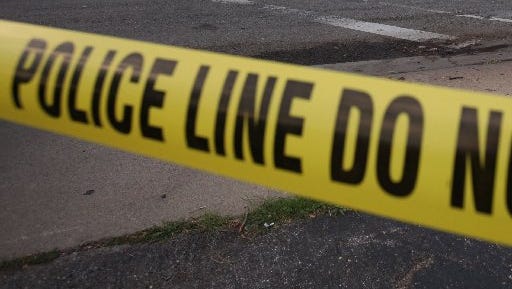What Trump gets right and wrong about the violent crime rate

Republican presidential nominee Donald Trump expects to visit Detroit next weekend, in his third trip to Michigan since the Republican National Convention. Trump, during his last two visits to the state, described the city of Detroit as topping the list of most dangerous places as it relates to violent crime, and during his speech to the RNC, he offered a dismal look at public safety across the U.S., saying, "Decades of progress made in bringing down crime are now being reversed by (the Obama) administration’s rollback of criminal enforcement."
► Related:Detroit homicide victims' mothers seek swift justice
Let's take a look at the figures behind those statements and what researchers know about violent crime in the U.S. and in Detroit.
Nationwide, there were 365 violent crimes per 100,000 residents in 2014, the latest full year for which data are available. It's the lowest rate in more than four decades, according to FBI data. Violent crime includes crimes in the categories of murder, rape, robbery and aggravated assault. Between 2013 and 2014, violent crime decreased by 0.2%.
Cannot see the figure? Click here to view.
Violent crime peaked in the U.S. in the early 1990s at a rate of 758 violent crimes per 100,000 residents. There was a slight uptick in the violent crime rate between 2005 and 2007. But overall, the rate of violent crime has trended downward in the U.S. And so, long-term, Trump's statement on crime nationwide is an exaggeration.
In the short-term, preliminary figures from the FBI show a 1.7% increase in violent crime for the first six months of 2015 compared to 2014. But if, by the end of 2015, the overall violent crime increase remained at 1.7% (we won't know until the FBI releases the 2015 data in late September), the violent crime rate in the U.S. would increase to 369 violent crimes per 100,000 residents, well below the rate of 459 violent crimes per 100,000 residents prior to President Barack Obama taking office in 2009.
According to the FBI report for the first six months of 2015, the northeast was the only region that did not see an uptick in violent crime. Across the country, property crimes, such as burglary, larceny-theft and motor vehicle theft decreased 4.2% during that period.
What types of violent crimes are increasing?
The FBI reports a 6% increase in murder nationwide by mid-year 2015 compared to the same period in 2014. Murder increased at a faster rate in communities in the south and Midwest, 8.6% and 9.9%, respectively. Robberies increased at a faster rate in the west than other regions of the country.
In the absence of official FBI statistics, researchers and the media have been investigating what could account for the uptick in violent crimes, particularly homicides. In an analysis of data from 56 large cities compiled by the Washington Post and Major Cities Chiefs' Association, Richard Rosenfeld, professor of criminology at the University of Missouri-St. Louis, estimates that homicides in cities with populations of 250,000 or more will have increased by 16.8% in 2015.
Rosenfeld cites three plausible explanations for the rise in homicides that are worth future study: the heroin epidemic, declining imprisonment rates and the Ferguson effect. The Ferguson effect, coined by St. Louis Metropolitan Police Chief Sam Dotson describes a number of different phenomena after the death of Michael Brown and the controversy surrounding the police use of force particularly against African Americans, including: those who lack trust in the police force taking matters into their own hands and depolicing.
Detroit's homicide rate
In Detroit, the homicide rate has been declining over the last several years. Police reported 295 criminal homicide cases last year, down from 299 in 2014. In 2012, the city had 386 criminal homicide cases, equating to the highest homicide rate in nearly two decades: 55 homicides per 100,000 residents.
The latest figures show homicides are up 10% compared to the same period last year — 193 homicide victims as of Aug. 21, according to the Detroit Police Department. The total violent crime rate in Detroit is 6% lower year-to-date compared to 2015.
Is Detroit the most violent city in the U.S.?
The FBI specifically advises against using its data to create rankings. According to the FBI's website, such comparisons "lead to simplistic and/or incomplete analyses that often create misleading perceptions adversely affecting communities and their residents." Trump has said Detroit is among the cities with the highest levels of violent crime. In 2014, more than 30 smaller communities had a higher violent crime rate than Detroit. Among larger cities, those with 100,000 or more residents, Detroit had the highest violent crime rate in the country in 2014, with 1,989 violent crimes per 100,000 residents, according to FBI data.
More than comparing city crime totals, Rosenfeld stresses the importance of examining police data and where the victims live. Some people live in neighborhoods where they experience a far higher risk, and some people live in areas where the risk of violent crime is lower than average. "To really get a perspective on how crime impacts people in their day-to-day lives, it is those places that matter," he said.